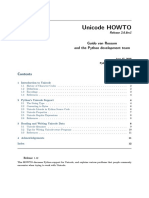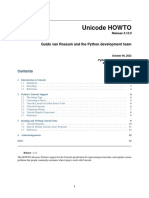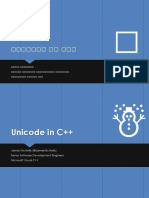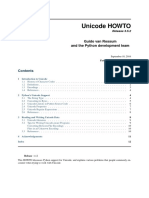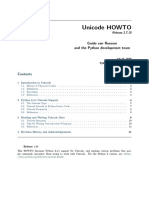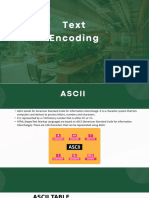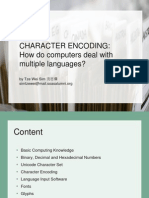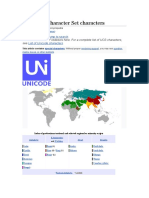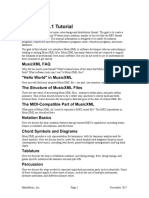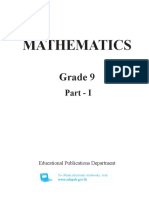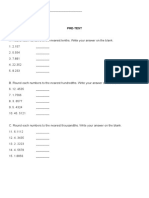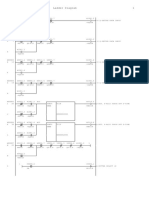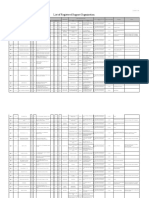Unicode vs UTF-8
Is Unicode the same thing as UTF - 8? If not, what's the difference?
Unicode and UTF-8 are related, but they are not the same thing. Here's a breakdown of the
differences:
1. Unicode:
Definition: Unicode is a character encoding standard designed to support the characters of
all the writing systems of the world, as well as various symbols and control codes. It
provides a unique number (code point) for every character, regardless of platform,
program, or language.
Purpose: To create a universal character set that covers all the characters and symbols
needed by different languages and scripts.
2. UTF-8:
Definition: UTF-8 (Unicode Transformation Format - 8 bit) is one of the encoding schemes
used to represent Unicode characters. It is a variable-length encoding that uses one to four
bytes for each character.
Purpose: To efficiently encode the characters defined by Unicode, especially for
compatibility with ASCII text, as the first 128 characters of Unicode (which correspond to
standard ASCII) are encoded in a single byte.
Key Differences:
Scope: Unicode is the overarching standard for character encoding, while UTF-8 is a specific
implementation of this standard.
Function: Unicode defines the set of characters and their code points, whereas UTF-8 defines
how these code points are encoded into bytes for storage or transmission.
Encoding: UTF-8 is one of several ways to encode Unicode characters. Other encoding schemes
include UTF-16 and UTF-32, which differ in how they encode the same set of Unicode characters.
In summary, Unicode is the comprehensive character set, and UTF-8 is one of the ways to encode the
characters from that set into bytes.
So in other words, all characters have a unique code point. it just the way they are encoded in
bytes that give rise to different encoding schemes
Printed using Save ChatGPT as PDF, powered by PDFCrowd HTML to PDF API. 1/2
� Yes, exactly. Every character in the Unicode standard has a unique code point, which is essentially a
unique number assigned to that character. The various encoding schemes, like UTF-8, UTF-16, and
UTF-32, dictate how these code points are translated into sequences of bytes for storage and
transmission. Here's a bit more detail:
Code Points: Unicode assigns each character a unique code point, which is typically written in
the form U+xxxx, where "xxxx" is a hexadecimal number. For example, the character "A" has the
code point U+0041.
Encoding Schemes:
UTF-8: Uses 1 to 4 bytes to represent each code point. It is backward compatible with ASCII,
meaning that the first 128 characters (those in the ASCII set) are represented by the same
single byte values in both ASCII and UTF-8.
UTF-16: Uses 2 bytes for most common characters but uses 4 bytes for characters outside
the Basic Multilingual Plane (BMP), which includes many rare characters and symbols.
UTF-32: Uses 4 bytes for all characters, which makes it a fixed-length encoding scheme. This
can be less efficient in terms of storage compared to UTF-8 and UTF-16 but is simpler to
process.
Example:
The Unicode code point for the character "A" is U+0041.
In UTF-8, "A" is encoded as a single byte: `41`.
In UTF-16, "A" is encoded as two bytes: `00 41`.
In UTF-32, "A" is encoded as four bytes: `00 00 00 41`.
Different encoding schemes optimize for different factors such as compatibility with older systems
(like ASCII), simplicity of processing, and storage efficiency.
ChatGPT can make mistakes. Check important info.
Printed using Save ChatGPT as PDF, powered by PDFCrowd HTML to PDF API. 2/2




